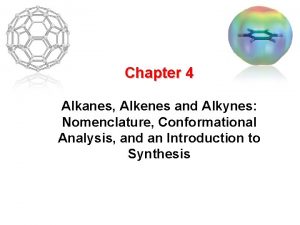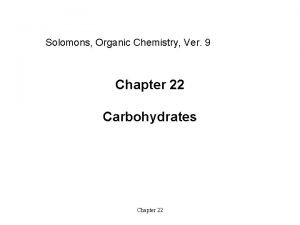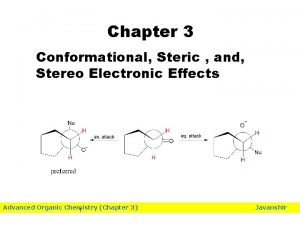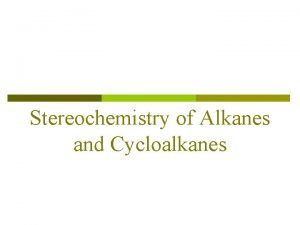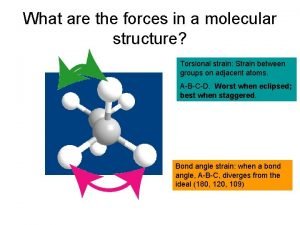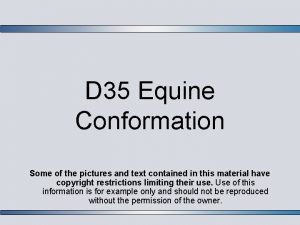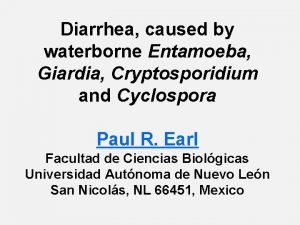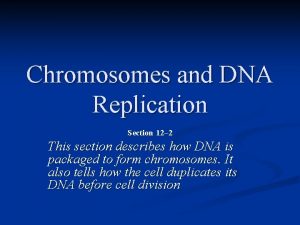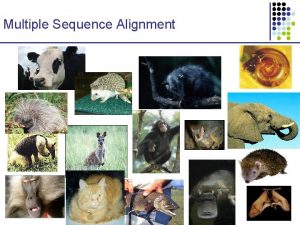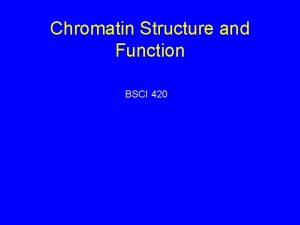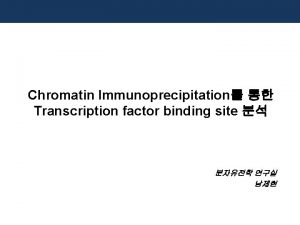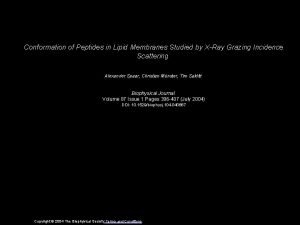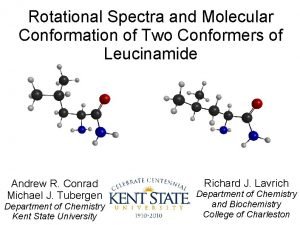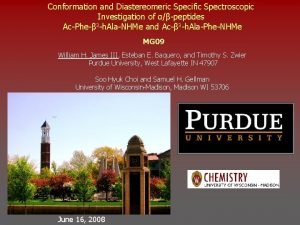V 6 Analyzing 3 D chromatin conformation Chromatin










- Slides: 10

V 6 – Analyzing 3 D chromatin conformation Chromatin conformation has large implications on gene expression, but is usually ignored in expression analysis. Program for today: - 3 D chromatin conformation - Hi-C method - Biases in Hi-C data analysis - integrated analysis of multiple data sources V 6 Processing of Biological Data - SS 2020 1

chromatin V 6 Processing of Biological Data - SS 2020 www. wikipedia. org 2

Chromosome Conformation Capture Technologies DNAprotein crosslinks e. g. with 1 -3% formaldehyde, 30 min add primers biotin tags at ligation junctions second ligation Step primer for one DNA region 2002 V 6 2006 2009 Processing of Biological Data - SS 2020 www. wikipedia. org 3

3 D Chromatin conformation: highest level 249 Mb 242 Mb 198 Mb 186 Mb Data from human GM 12878 cells (lymphoblastoid cell line). Nucleus At the highest-level of 3 D organization trans-interactions are rare and individual chromosomes (chrs) occupy distinct territories (denoted by irregular shapes) within the nucleus (grey circle). Gene-rich chromosomes are preferentially found inside the nuclear core and genepoor chromosomes are localized close to the nuclear membrane. V 6 Processing of Biological Data - SS 2020 Bonev & Cavalli, Nature Rev Genet 17, 661– 678 (2016) | 4

Around the nuclear membrane The nuclear envelope consists of outer and inner nuclear membranes (ONM and INM, respectively) separated by the 30– 50 -nm-wide perinuclear space (PNS). Below the INM exists the 10– 30 -nm-thick, fibrous meshwork of the nuclear lamina. The nuclear lamina is composed mostly of lamins, which are nuclear intermediate filament proteins. V 6 Packed heterochromatin exists at the nuclear periphery. Processing of Biological Data - SS 2020 Maurer & Lammerding, Annu Rev Biomed Eng 21, 443 (2019) | 5

3 D Chromatin conformation: 50 kb resolution Different topological domains with similar epigenetic signatures are characterized by stronger inter-domain interactions. They are organized into compartments. Here, blue and grey represent the active compartment, whereas interactions between green, orange and red topologically associating domains (TADs) form the inactive compartment. Bonev & Cavalli, Nature Rev Genet 17, 661– 678 (2016) | V 6 Processing of Biological Data - SS 2020 6

3 D Chromatin conformation: 10 kb resolution (left) ca. 8 Mb region containing several TADs that are manually annotated with solid lines. (right) 3 different TADs, enriched for either active marks (H 3 K 4 me 3 and H 3 K 36 me 3; grey), Polycomb (H 3 K 27 me 3; green) or heterochromatin (H 3 K 9 me 3; orange) are schematically represented in the 3 D space. CTCF proteins are shown as blue rectangles and loop-extrusion complexes (potentially cohesin) are depicted as green circles. Bonev & Cavalli, Nature Rev Genet 17, 661– 678 (2016) | V 6 Processing of Biological Data - SS 2020 7

3 D Chromatin conformation: 5 kb resolution (right) Examples of different types of chromatin loops that can potentially reside within a domain (left) : example of an architectural loop (circled blue) as seen in high-resolution Hi-C data. Regions participating in loop formation are demarcated with dotted lines). Also shown are CCCTC-binding factor (CTCF)-binding profile and CTCF motif orientation. V 6 Processing of Biological Data - SS 2020 Bonev & Cavalli, Nature Rev Genet 17, 661– 678 (2016) | 8

Processing data from Hi. C Schematic representation of Hi-C data analysis, starting from a cartoon depicting cross-linked chromatin and a prototypic pair of mate reads positioned on the restriction fragments from which they originate. Raw sequencing paired-end reads (in FASTQ files) are aligned to the reference genome considering the mate reads independently. Then, aligned reads (in BAM files) are assigned to their fragment of origin and paired. The paired reads are stored in a sorted file. Finally, after filtering and binning, the read counts are stored in contact matrix files. Pal et al. Biophys Reviews 11, 67– 78(2019) V 6 Processing of Biological Data - SS 2020 9

Data from Hi. C n × n contact matrix, where the genome is divided into n equally sized bins. The value within each cell of the matrix indicates the number of pair-ended reads spanning between a pair of bins. Depending on sequencing depths, the commonly used sizes of these bins can range from 1 kb to 1 Mb. The bin size of Hi-C interaction matrix is also referred to as 'resolution', Owing to high sequencing cost, most available Hi-C datasets have relatively low resolution such as 25 or 40 kb, as the linear increase of resolution requires a quadratic increase in the total number of sequencing reads. Zhang et al. Nature Commun 9, 750 (2018) V 6 Processing of Biological Data - SS 2020 10
